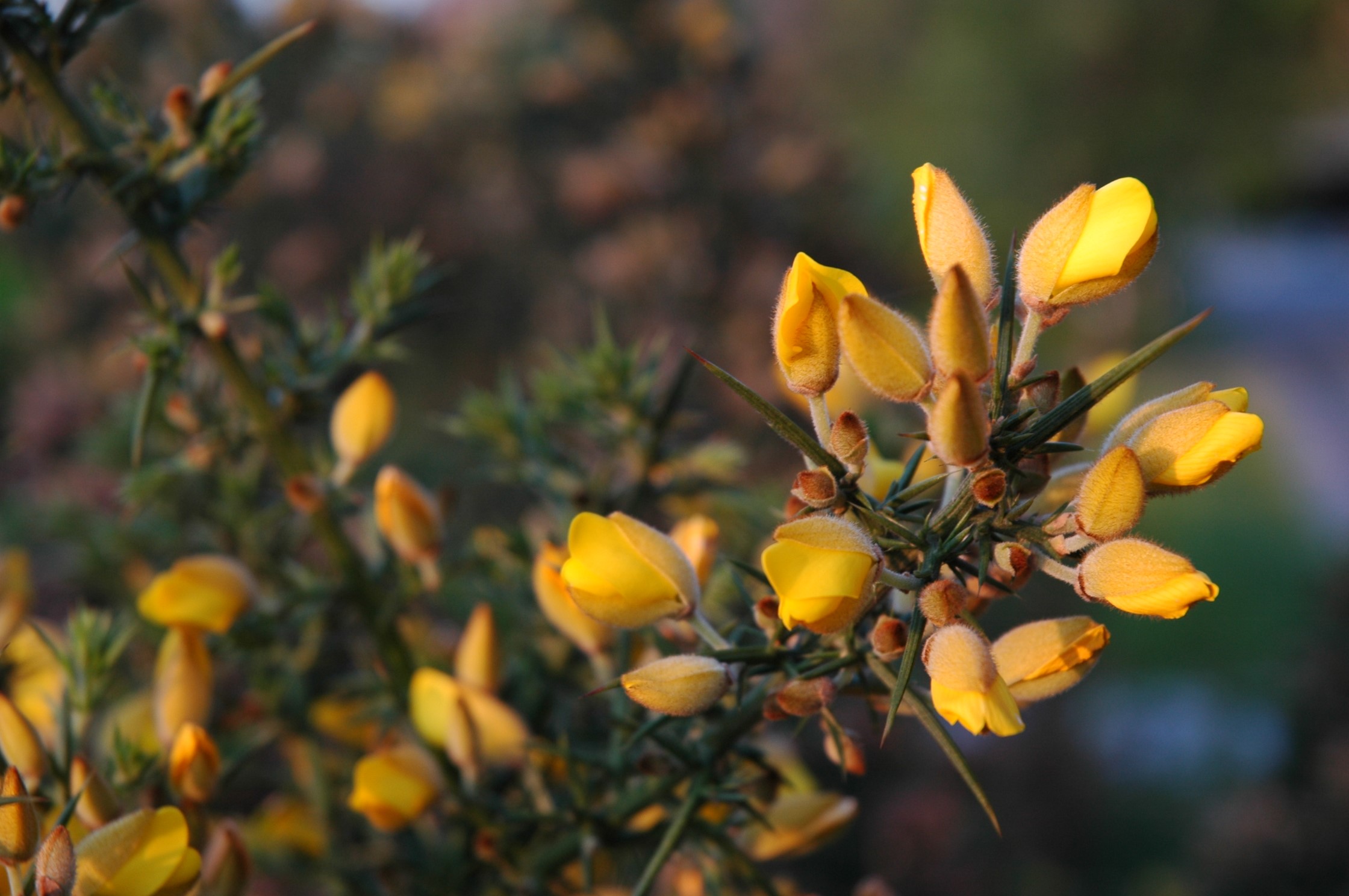
Gorse
Ulex europaeus
Family and description
The Gorse is a perennial shrub that can reach a height of up to 3 m. It stands out due to its very thorny bushes, with erect, rigid, very dense, perennial branches, with young, dark green shoots, and leaves modified into green linear spines, alternately arranged on the stems.
Its branches are arranged alternately and are striated. The spines are complex, with a main spine and several lateral ones.
The leaves on adult plants are very small, resembling triangular, green or brown scales. The flowers, which bloom in winter and spring, are arranged in groups and chalice shaped, formed by two yellow valves, almost the size of the corolla, with two small bracts. The corolla is also yellow. The fruit, which appears in spring and summer, is a flat, black, densely hairy pod containing 2 to 3 small seeds.
Origin and habitat
Originally from Western European, the Gorse is mainly found on the Atlantic coast, it can also be found growing spontaneously in some Mediterranean areas. When introduced in other regions, they may become invasive, such is the case in the United States and Australia. It is a humidity-demanding species, preferring temperate climates. It also does well in open spaces, with plenty of sunlight. It adapts perfectly to poor, dry soils but does not tolerate calcareous soils. It has a deep root system and waxy leaves adapted to dry environments.
Uses and curiosities
One of the particularities of this plant is that is very fire resistant, as it is capable of regenerating, from the roots, after a fire. Seeds are also often able to germinate after a fire.
The Gorse can live for about 30 years.